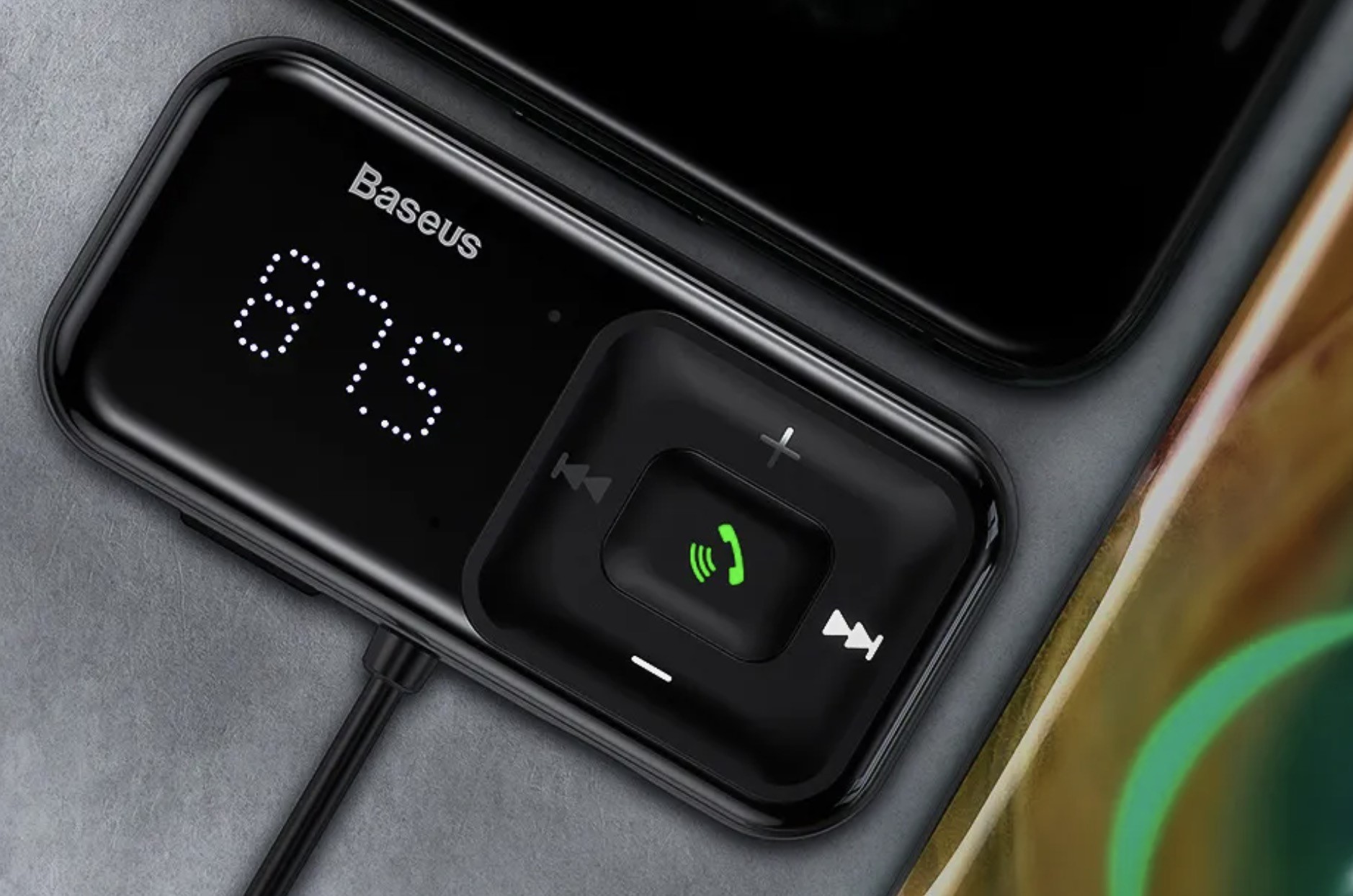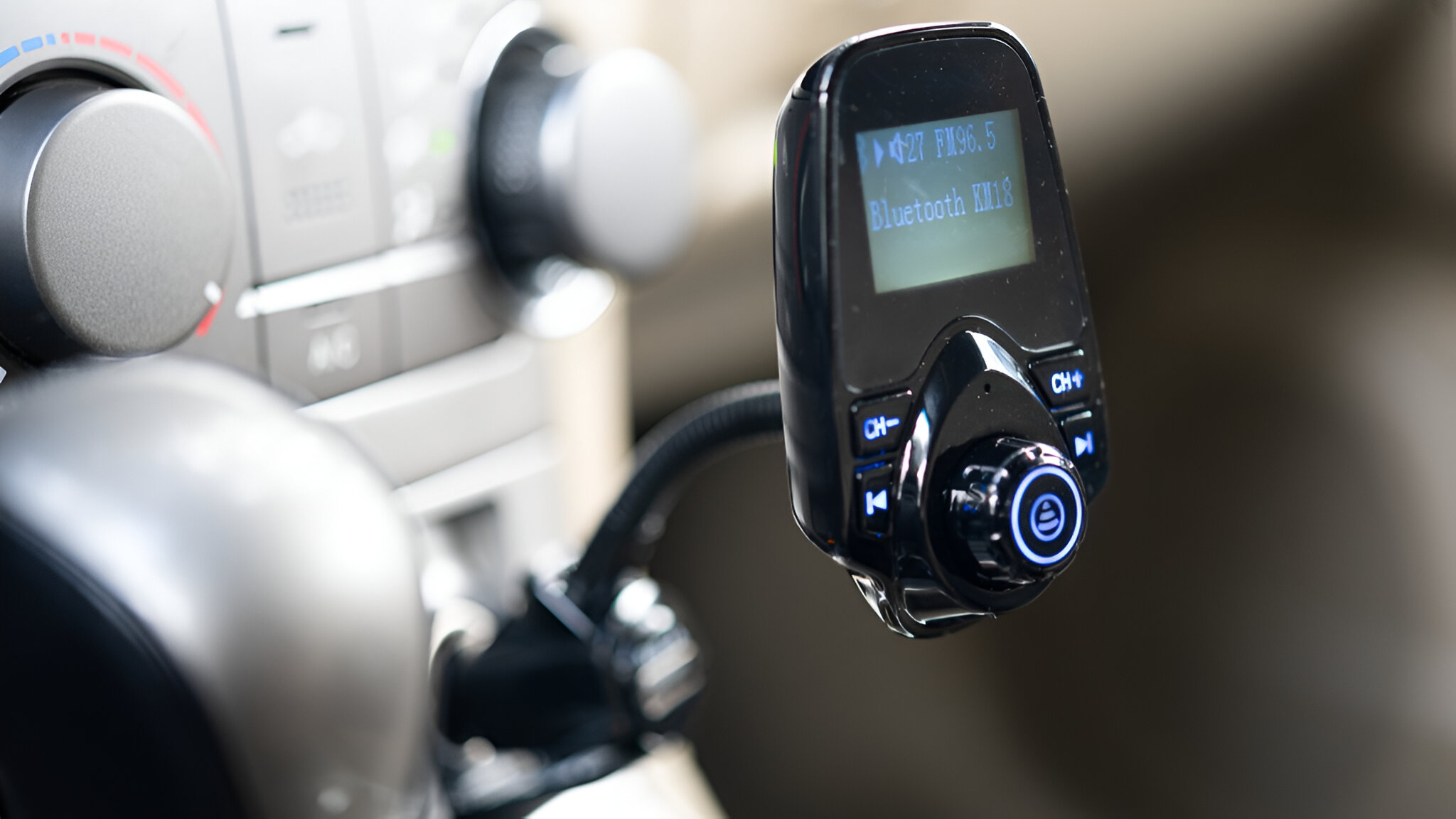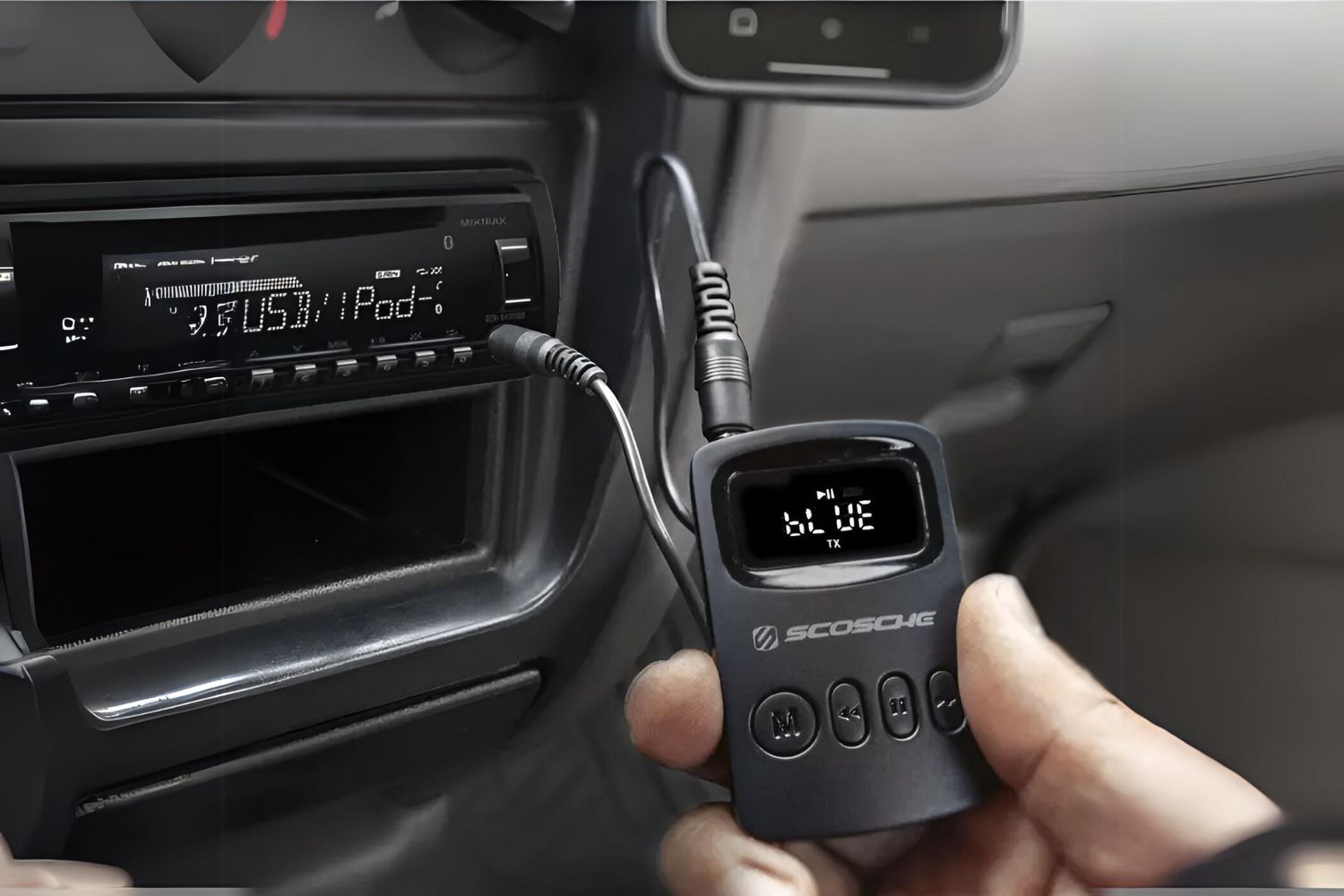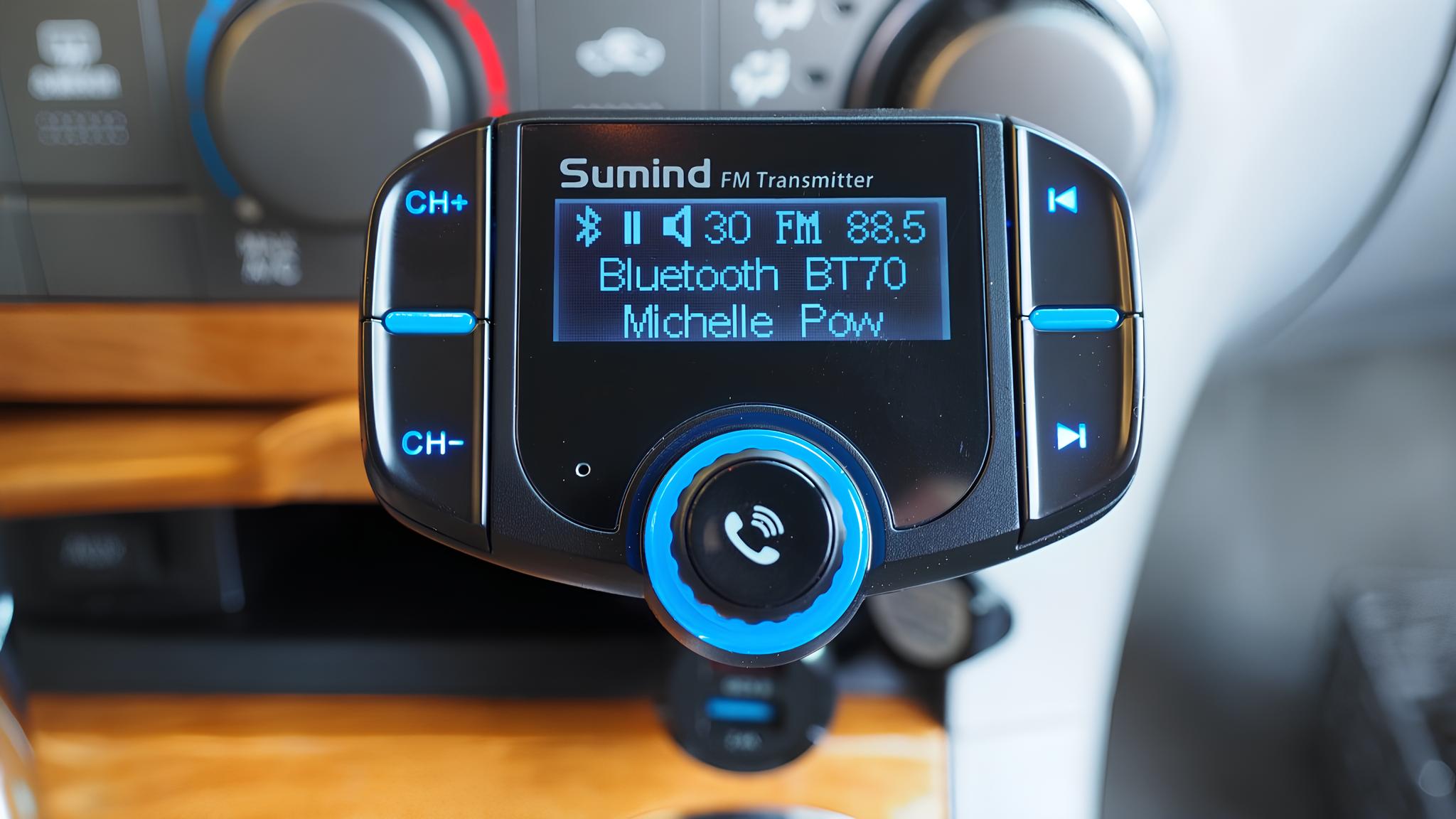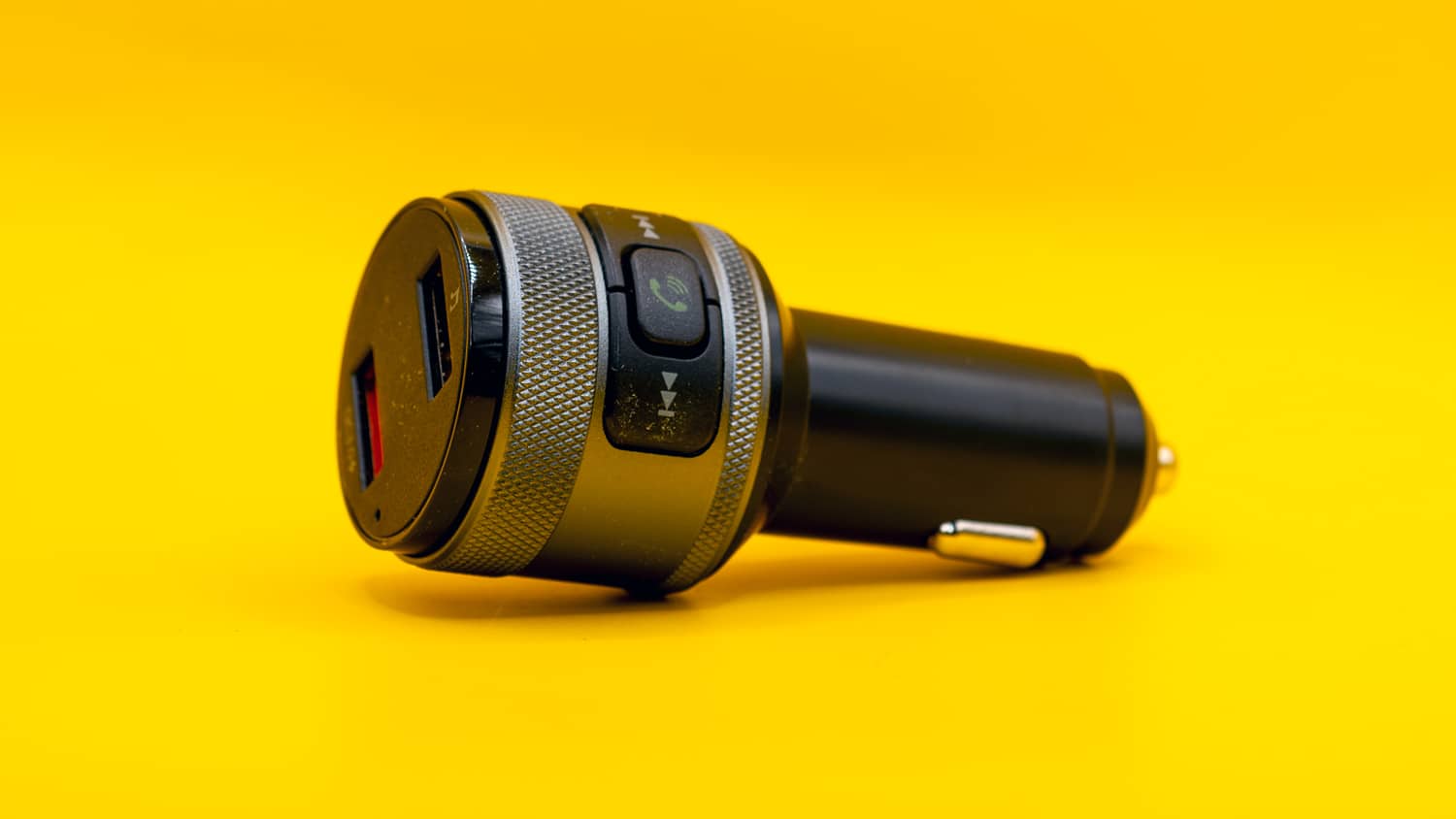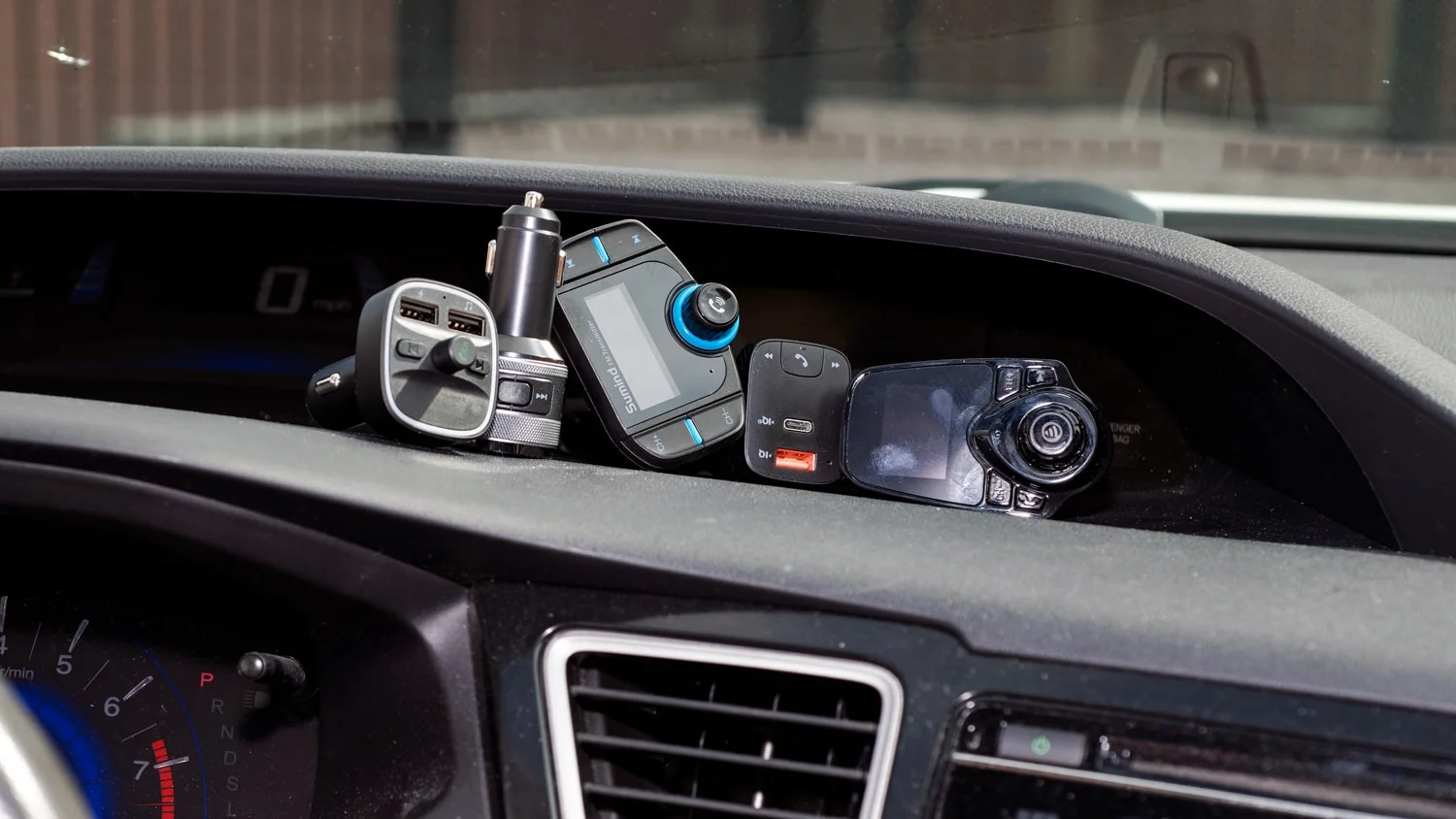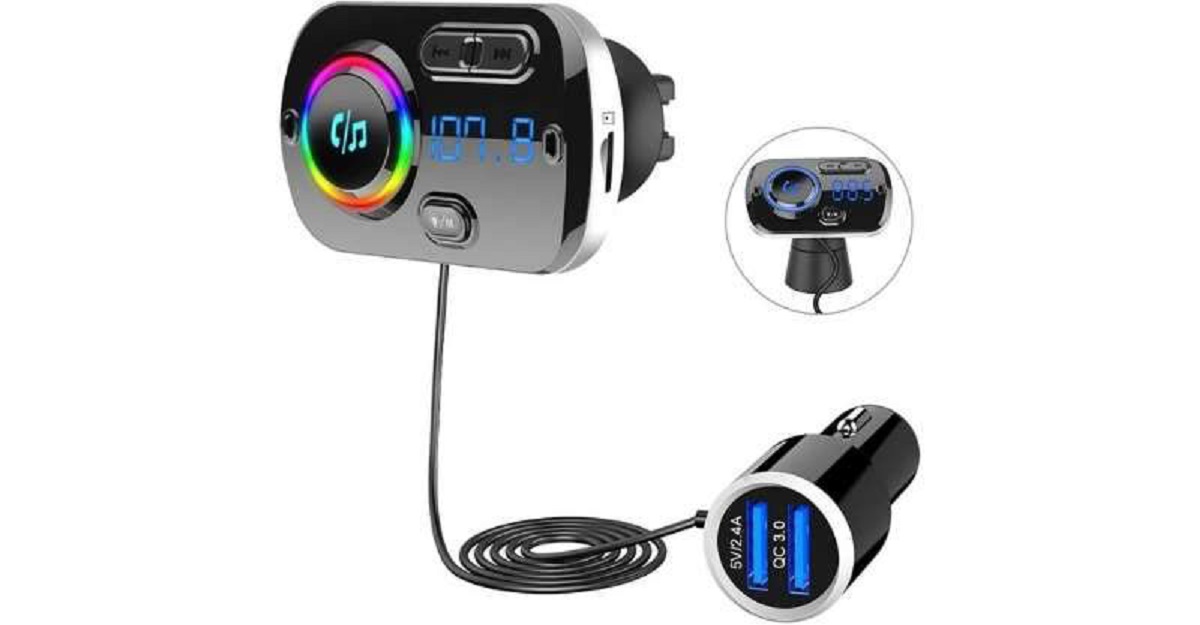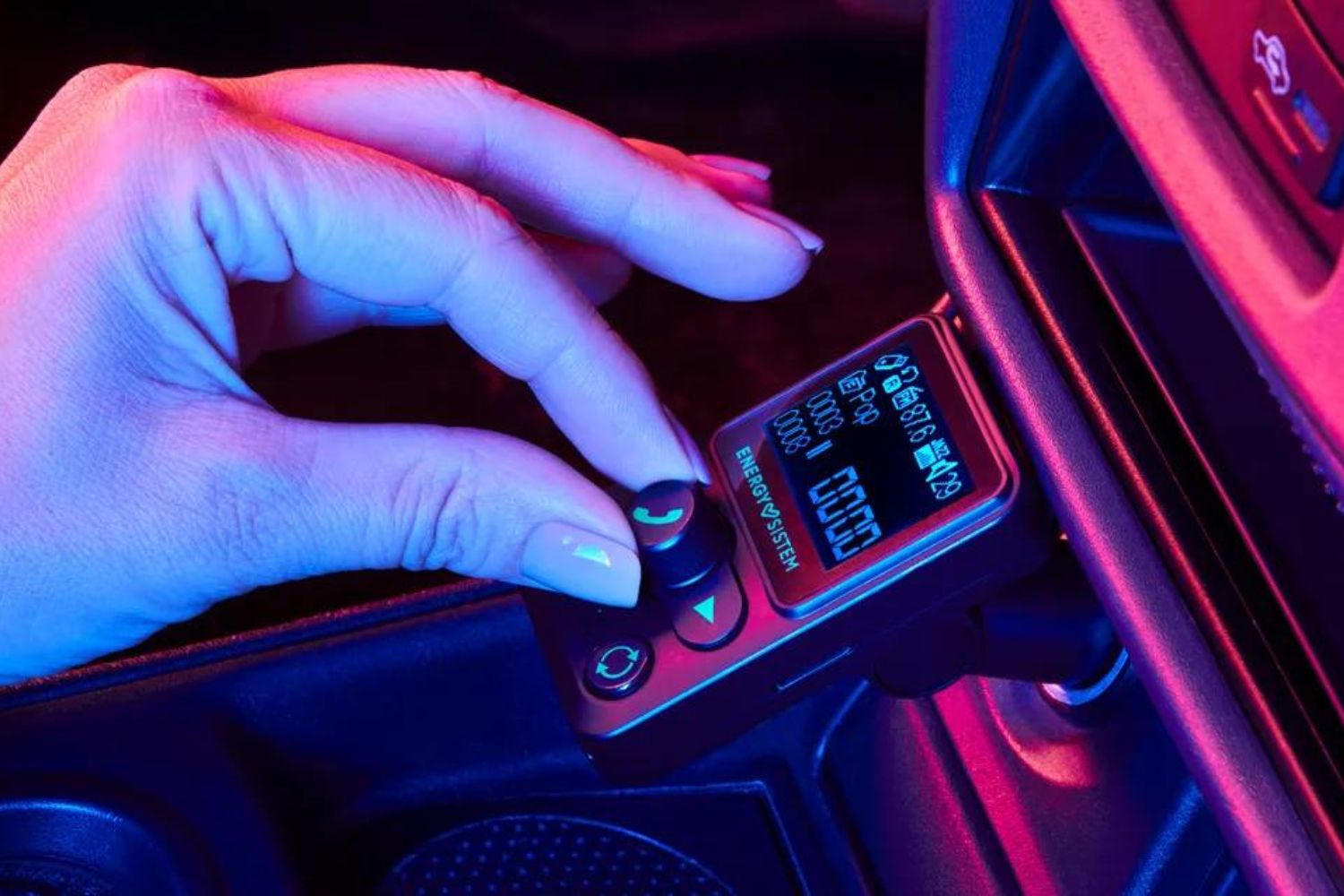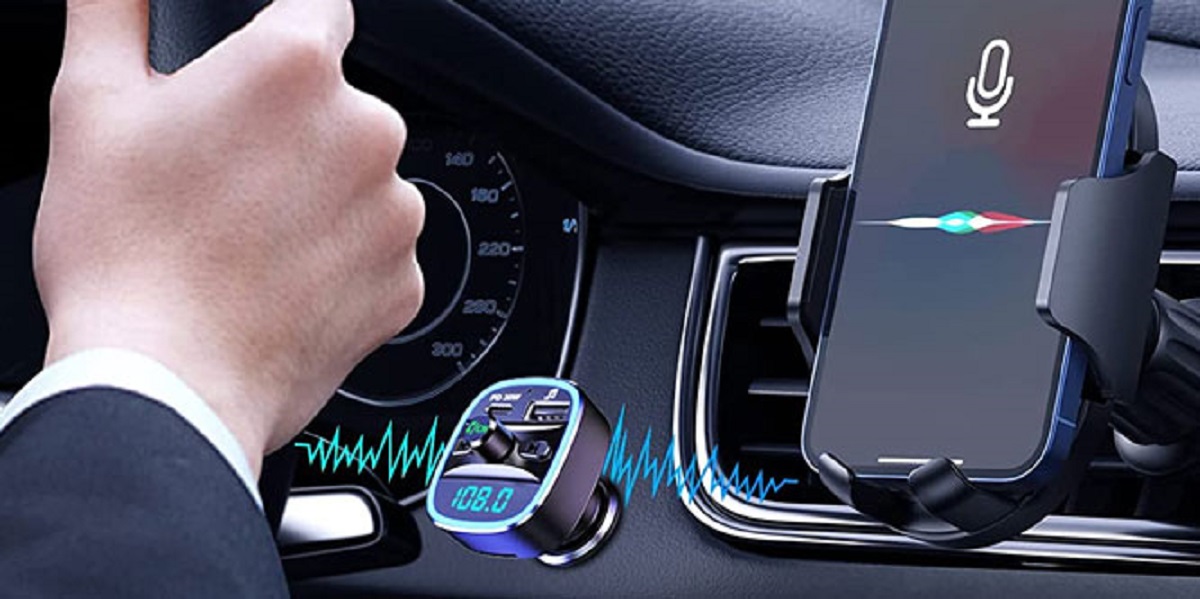Introduction
In today's fast-paced world, staying connected while on the go has become a necessity. Whether it's for work, entertainment, or simply keeping in touch with loved ones, having seamless access to audio content in your vehicle is crucial. This is where Bluetooth FM transmitters come into play, offering a convenient solution for wirelessly streaming audio from your smartphone to your car's sound system.
Bluetooth FM transmitters have revolutionized the way we enjoy in-car audio, providing a wireless bridge between our mobile devices and car stereos. By leveraging Bluetooth technology and FM radio frequencies, these compact devices enable users to effortlessly stream music, podcasts, and hands-free calls from their smartphones to their car speakers. This seamless integration eliminates the hassle of dealing with cumbersome cables and allows for a clutter-free driving experience.
As technology continues to evolve, Bluetooth FM transmitters have become increasingly sophisticated, offering advanced features such as multiple USB charging ports, voice command support, and even compatibility with digital assistants like Siri and Google Assistant. This level of integration not only enhances convenience but also promotes safer driving practices by minimizing distractions.
In this article, we will delve into the inner workings of Bluetooth FM transmitters, explore the myriad benefits they offer, and provide practical insights into selecting, setting up, and troubleshooting these devices. Whether you're a tech enthusiast looking to optimize your in-car audio experience or a busy professional seeking a hands-free solution for managing calls while driving, understanding the potential of Bluetooth FM transmitters can significantly enhance your daily commute.
So, buckle up and get ready to embark on a journey into the world of wireless convenience with Bluetooth FM transmitters. Whether you're a music aficionado, a podcast enthusiast, or simply in need of a reliable hands-free calling solution, these versatile devices are poised to elevate your in-car audio experience to new heights.
How Bluetooth FM Transmitters Work
Bluetooth FM transmitters function as intermediary devices that facilitate wireless audio streaming from a smartphone or other compatible devices to a car's stereo system. These compact gadgets leverage Bluetooth technology to establish a seamless connection between the user's mobile device and the transmitter itself. Once paired, the transmitter then broadcasts the audio signal over FM radio frequencies, allowing the car's stereo system to receive and play the transmitted audio.
The process begins with the user plugging the Bluetooth FM transmitter into the vehicle's power outlet, typically the cigarette lighter socket. Upon powering up, the transmitter enters pairing mode, enabling it to be discovered and connected to the user's smartphone or other Bluetooth-enabled devices. Once the pairing process is complete, the transmitter is ready to transmit audio from the connected device to the car's stereo system.
When the user selects a specific FM frequency on the transmitter, it effectively becomes a mini radio station, broadcasting the audio signal over that frequency. The user can then tune the car's radio to the same frequency, allowing the transmitted audio to be received and played through the car's speakers. This seamless integration enables drivers and passengers to enjoy their favorite music, podcasts, or hands-free calls without the need for physical cable connections.
Moreover, many modern Bluetooth FM transmitters come equipped with advanced features such as noise-cancellation technology, ensuring high-quality audio transmission even in environments with significant radio interference. Additionally, some transmitters offer multiple USB charging ports, allowing users to power up their devices while streaming audio, making them a multifunctional addition to any vehicle.
By understanding the inner workings of Bluetooth FM transmitters, users can fully appreciate the convenience and flexibility these devices offer. Whether it's transforming a long commute into an immersive audio experience or effortlessly managing calls while on the road, Bluetooth FM transmitters have undoubtedly redefined in-car audio connectivity, providing a seamless bridge between personal devices and vehicle entertainment systems.
Benefits of Using Bluetooth FM Transmitters
-
Seamless Wireless Connectivity: Bluetooth FM transmitters eliminate the need for cumbersome cables, providing a seamless wireless connection between your smartphone and car stereo. This eradicates the inconvenience of dealing with tangled cords and allows for a clutter-free driving experience.
-
Enhanced Convenience: With Bluetooth FM transmitters, users can effortlessly stream their favorite music, podcasts, or audiobooks directly from their smartphones to their car speakers. This level of convenience ensures that drivers and passengers can enjoy a personalized audio experience without the limitations of traditional wired connections.
-
Hands-Free Calling: Many Bluetooth FM transmitters feature built-in microphones, enabling hands-free calling while driving. This functionality promotes safer driving practices by allowing users to manage calls without having to physically handle their smartphones, reducing distractions and enhancing overall road safety.
-
Multiple Device Compatibility: Bluetooth FM transmitters are designed to be compatible with a wide range of devices, including smartphones, tablets, and MP3 players. This versatility ensures that users can seamlessly connect and stream audio from various devices, catering to diverse preferences and needs.
-
USB Charging Capabilities: Several Bluetooth FM transmitters are equipped with multiple USB charging ports, enabling users to power up their devices while streaming audio. This dual functionality is particularly useful during long drives, ensuring that smartphones and other gadgets remain powered throughout the journey.
-
Integration with Digital Assistants: Advanced Bluetooth FM transmitters offer integration with popular digital assistants such as Siri and Google Assistant. This allows users to access voice commands for tasks such as making calls, sending messages, or controlling music playback, further enhancing the hands-free experience.
-
Noise Cancellation Technology: Many modern Bluetooth FM transmitters are equipped with noise-cancellation technology, ensuring that the transmitted audio maintains high quality even in environments with significant radio interference. This feature contributes to a more immersive and enjoyable audio experience for users.
-
Cost-Effective Solution: Bluetooth FM transmitters provide a cost-effective way to upgrade a car's audio capabilities, especially for vehicles without built-in Bluetooth or auxiliary input options. This affordability makes them an accessible and practical solution for enhancing in-car audio connectivity.
-
Flexibility and Portability: Due to their compact size and portability, Bluetooth FM transmitters can be easily moved between different vehicles, making them a versatile and adaptable solution for individuals who frequently switch between cars or rental vehicles.
-
Promotes Safe Driving: By enabling hands-free calling and minimizing distractions, Bluetooth FM transmitters contribute to safer driving practices, aligning with modern regulations and recommendations for responsible and attentive driving behavior.
In essence, the benefits of using Bluetooth FM transmitters extend far beyond simple wireless connectivity, encompassing enhanced convenience, safety, and flexibility. These versatile devices have become indispensable accessories for modern drivers, offering a seamless and personalized audio experience while promoting responsible and distraction-free driving habits.
Choosing the Right Bluetooth FM Transmitter
Selecting the right Bluetooth FM transmitter is crucial to ensure a seamless and tailored in-car audio experience. With a myriad of options available in the market, it's essential to consider several factors to make an informed decision.
Compatibility
When choosing a Bluetooth FM transmitter, it's vital to ensure compatibility with both the car's stereo system and the user's mobile devices. Some transmitters may have limitations based on the vehicle's radio frequency range or the type of audio output supported. Additionally, verifying compatibility with various devices such as smartphones, tablets, or MP3 players is essential to accommodate diverse user preferences.
Transmission Quality
The transmission quality of a Bluetooth FM transmitter directly impacts the audio experience in the vehicle. Look for transmitters equipped with advanced noise-cancellation technology to ensure clear and uninterrupted audio playback, especially in areas with high radio interference. Additionally, considering the transmitter's frequency range and signal stability is crucial for a consistent and reliable connection.
Additional Features
Bluetooth FM transmitters come with a range of additional features that can enhance user convenience and overall functionality. These may include multiple USB charging ports to power up devices while on the move, integrated microphones for hands-free calling, and support for voice commands through digital assistants. Assessing these features based on individual needs and preferences can significantly enhance the overall utility of the chosen transmitter.
User-Friendly Interface
Opt for a Bluetooth FM transmitter with an intuitive and user-friendly interface. This includes easily accessible controls for adjusting FM frequencies, managing calls, and navigating audio playback. A clear and legible display, along with straightforward pairing and setup processes, contributes to a hassle-free user experience.
Build Quality and Design
Considering the build quality and design of the Bluetooth FM transmitter is essential for long-term usability. A compact and durable design ensures portability and longevity, while a flexible and adjustable form factor allows for easy positioning within the vehicle. Additionally, evaluating the transmitter's heat dissipation capabilities is crucial for reliable and safe operation, especially during extended use.
Budget and Value
While exploring various options, it's important to balance the features and capabilities of Bluetooth FM transmitters with their respective price points. Assessing the overall value offered in terms of functionality, durability, and additional features against the budget ensures a well-informed and cost-effective purchase decision.
By carefully evaluating these factors, users can confidently select the right Bluetooth FM transmitter that aligns with their specific requirements, ultimately enhancing their in-car audio experience with seamless wireless connectivity and versatile functionality.
Setting Up and Using a Bluetooth FM Transmitter
Setting up and using a Bluetooth FM transmitter is a straightforward process that can significantly enhance your in-car audio experience. Here's a detailed guide to help you seamlessly integrate this versatile device into your vehicle:
1. Initial Setup
- Begin by plugging the Bluetooth FM transmitter into your car's power outlet, typically the cigarette lighter socket. This provides the necessary power for the transmitter to function.
- Once powered, the transmitter will enter pairing mode, indicated by a flashing LED light or a specific indicator on the device. This allows it to be discovered by your smartphone or other Bluetooth-enabled devices.
2. Pairing with Your Smartphone
- On your smartphone, enable Bluetooth connectivity and search for available devices. The Bluetooth FM transmitter should appear in the list of available devices.
- Select the transmitter to initiate the pairing process. Once connected, the LED indicator on the transmitter may change to a steady light or display a specific color to indicate a successful connection.
3. Selecting an FM Frequency
- With the Bluetooth FM transmitter successfully paired with your smartphone, it's time to select an FM frequency on the transmitter itself. This frequency will be used to broadcast the audio signal to your car's stereo system.
- Choose an FM frequency that is not in use by local radio stations to minimize interference. Common frequencies such as 88.1 or 107.9 are often recommended for optimal performance.
4. Tuning Your Car Stereo
- Tune your car's stereo to the same FM frequency selected on the Bluetooth FM transmitter. This allows the audio signal from your smartphone to be received and played through the car's speakers.
- Once tuned to the correct frequency, you should hear the audio from your smartphone playing through the car's sound system, providing a seamless wireless audio experience.
5. Utilizing Additional Features
- Depending on the specific features of your Bluetooth FM transmitter, you may have access to additional functionalities such as hands-free calling, voice commands, and multiple USB charging ports.
- Take advantage of these features to manage calls, control music playback, and keep your devices charged while on the move, enhancing both convenience and safety during your journeys.
By following these steps, you can effectively set up and utilize a Bluetooth FM transmitter to transform your in-car audio experience. Whether you're streaming music, enjoying podcasts, or managing calls hands-free, this wireless solution offers a versatile and user-friendly way to stay connected while on the road.
Troubleshooting Common Issues
Despite the seamless functionality of Bluetooth FM transmitters, users may encounter common issues that can hinder the optimal performance of these devices. Understanding how to troubleshoot these issues is essential for maintaining a reliable and uninterrupted in-car audio experience. Here's a comprehensive guide to troubleshooting common problems associated with Bluetooth FM transmitters:
1. Interference and Signal Weakness
If you experience interference or a weak audio signal while using a Bluetooth FM transmitter, try the following troubleshooting steps:
- Adjust the position of the transmitter within the vehicle to minimize signal interference.
- Experiment with different FM frequencies to identify the most suitable frequency with minimal interference.
- Ensure that the transmitter is adequately powered and positioned away from other electronic devices that may cause signal disruption.
2. Connectivity Issues
In cases where the Bluetooth FM transmitter struggles to establish a stable connection with your smartphone or other devices, consider the following troubleshooting measures:
- Power cycle both the transmitter and the connected device to refresh their respective Bluetooth connections.
- Verify that the transmitter is within the recommended Bluetooth range of the connected device and re-pair the devices if necessary.
- Update the firmware or software of the Bluetooth FM transmitter to ensure compatibility with the latest Bluetooth protocols.
3. Audio Quality and Distortion
When encountering audio quality issues such as distortion or static during playback, the following troubleshooting steps can help resolve these issues:
- Adjust the volume levels on both the transmitter and the car stereo to prevent audio distortion.
- Inspect the audio cable connections to ensure they are secure and free from damage or wear.
- Consider using a different audio source or device to isolate potential issues with the original audio playback device.
4. Power and Charging Problems
If the Bluetooth FM transmitter experiences power-related issues or fails to charge connected devices, consider the following troubleshooting actions:
- Verify that the power outlet in the vehicle is functioning correctly and providing adequate power to the transmitter.
- Inspect the USB charging ports on the transmitter for any obstructions or damage that may impede proper charging.
- Test the transmitter with alternative power sources or vehicles to determine if the issue is specific to the vehicle's power system.
5. Firmware and Software Updates
Regularly updating the firmware or software of the Bluetooth FM transmitter can address potential compatibility issues and enhance overall performance. Consult the manufacturer's website or user manual for guidance on updating the transmitter's firmware, ensuring that it remains compatible with the latest Bluetooth standards and protocols.
By implementing these troubleshooting strategies, users can effectively address common issues associated with Bluetooth FM transmitters, ensuring a seamless and uninterrupted in-car audio experience. Whether it's mitigating signal interference, optimizing audio quality, or resolving connectivity issues, proactive troubleshooting measures can significantly enhance the functionality and reliability of these versatile devices.
Conclusion
In conclusion, Bluetooth FM transmitters have emerged as indispensable accessories for modern vehicle owners, offering a seamless and personalized in-car audio experience. These compact devices have revolutionized the way we connect our smartphones to car stereos, eliminating the constraints of traditional wired connections and enhancing convenience, safety, and flexibility on the road.
The evolution of Bluetooth FM transmitters has brought forth a myriad of benefits, including seamless wireless connectivity, hands-free calling capabilities, and compatibility with various devices. The ability to stream music, podcasts, and audiobooks directly from smartphones to car speakers has transformed mundane commutes into immersive audio experiences, catering to diverse entertainment preferences.
Furthermore, the integration of advanced features such as noise-cancellation technology, multiple USB charging ports, and support for digital assistants exemplifies the adaptability and multifunctional nature of Bluetooth FM transmitters. These features not only enhance the in-car audio experience but also promote safer driving practices by minimizing distractions and simplifying call management while on the road.
Selecting the right Bluetooth FM transmitter involves considering factors such as compatibility, transmission quality, additional features, user-friendly interface, build quality, and overall value. By making an informed choice, users can tailor their in-car audio setup to align with their specific requirements, ensuring a seamless and reliable wireless audio solution.
The setup and utilization of Bluetooth FM transmitters are straightforward, allowing users to effortlessly pair their devices, select suitable FM frequencies, and enjoy a wireless audio experience without the hassle of tangled cables. The user-friendly interface and additional features further contribute to a hassle-free and enjoyable in-car audio experience.
In addressing common issues associated with Bluetooth FM transmitters, proactive troubleshooting measures such as minimizing interference, optimizing connectivity, and ensuring audio quality can effectively resolve potential challenges, ensuring uninterrupted and reliable functionality.
Overall, the seamless integration of Bluetooth FM transmitters into the in-car audio landscape has redefined the way we engage with audio content while driving. Whether it's for entertainment, communication, or convenience, these versatile devices have become essential companions for modern drivers, enriching the daily commute and promoting a safer and more enjoyable driving experience. As technology continues to advance, Bluetooth FM transmitters are poised to remain at the forefront of in-car audio connectivity, offering innovative solutions for staying connected on the go.







